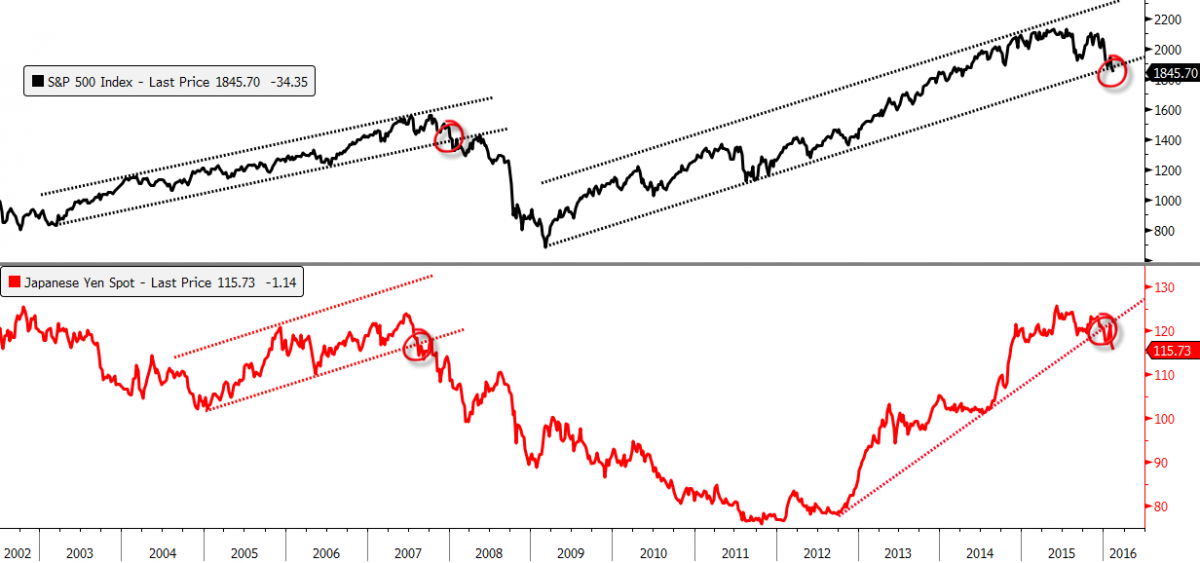With credit default swaps spiking in recent weeks among a wide number of major financial institutions—most notably Germany's largest bank, Deutsche Bank—it's time to take a look at the overall credit markets for signs of contagion/crisis.
In my last update on this space six months ago, Credit Markets Suggest Caution, I explained that "Deterioration in the credit markets increases the probability of lower prices ahead with a cautious stance toward equities warranted as financial stress remains elevated." Since then we've seen the credit space continue to deteriorate, which further reiterates a cautious stance on equities.
Here are some of the things I am monitoring.
Ted/LIBOR-OIS Spread
The Ted Spread (in green below) eased off its highs in January but is now moving back up. The LIBOR-OIS spread never materially eased as it did in 2010 and 2011 to signal the all clear and is creeping higher again. These developments argue the correction that began late in 2015 is not over and we went through a pause with the late January lows.
BofA Merrill Lynch's iRisk Index
The BOFAML global risk index (IRisk Index) is hitting new highs though still not quite as extreme as 2011, but moving in the wrong direction for the equity markets.
Quality Spreads
Despite the late January rally, many beta relationships (risk on versus risk off) I track failed to improve and some are even taking out their 2011 lows. In the middle panel we see the relative strength of small cap stocks (Russell 2000) relative to megacap defensive stocks (S&P 100) sinking to new lows (blue line). In the bottom panel we see the S&P 500 Low Quality Rank relative to the S&P 500 High Quality Rank ratio sinking below its 2011 lows. Weakness in these areas suggests the deleveraging of risk assets in the markets continues and a sustainable bottom has yet to be seen.
Multi-Year Trendlines Breaking
Another concerning development is that the S&P 500 and the Yen are breaking multi-year trends, similar to what transpired in 2007.
Economic Data Continues to Miss - Then and Now
Outside of the damage seen in the credit and equity markets we are also seeing some disappointing trends with respect to the economy. In terms of the last major bear market, note the consistent misses we saw develop starting in 2006 (in yellow) as measured by the Bloomberg Economic Surprise Index, which stayed mostly negative through 2007 and into the middle of 2008—a clear change in character from preceding years.
We are seeing similar circumstances today with the longest stretch of negative economic surprises since the recession ended in June 2009.
All of the above argue for a defensive posture by investors until some positive signals begin to emerge which are presently absent.
For a greater explanation of the credit markets and how they can be used as a leading indicator for stock market behavior, click here.












